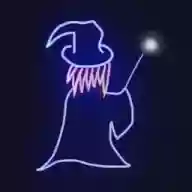Niigata’s folk songs, children’s songs, and nursery rhymes: the heart of our hometown passed down in song
Niigata Prefecture is known for hosting traditional Bon dances and festivals, as well as for its large area of rice cultivation and high yields.
We’ve selected many folk songs and children’s songs related to Niigata, including pieces themed around Sado Island.
Folk songs, which are often performed at festivals, convey a lively, festive atmosphere through their rhythmic sounds.
It’s also recommended to explore the background behind songs like “Sado Okesa,” which are beloved across Japan.
Be sure to listen to the folk and children’s songs that showcase the charm of each region of Niigata.
- A classic song that celebrates Niigata. The enduring spirit of our hometown passed down through song.
- Ranking of Popular Folk Songs
- Folk Songs, Children's Songs, and Nursery Rhymes of Aomori: Japanese Songs from Tsugaru and Hachinohe that Resonate with the Heart
- Folk songs, children's songs, and nursery rhymes of Nagasaki: the heart of the hometown passed down through song
- Folk songs, children's songs, and nursery rhymes of Toyama: the enduring heart of our hometown passed down through song
- [Japanese Folk and Regional Songs] A Collection of Beloved Masterpieces from Across Japan, Brimming with Local Pride
- [Folk Songs of Yamagata] The Heart of Our Hometown Passed Down in Song: Feelings Woven into Nostalgic Melodies
- Collection of winter nursery rhymes, folk songs, and children's songs. Includes fun winter hand-play songs too.
- [Folk Songs and Children's Songs of Akita] A curated selection of local masterpieces that evoke love for one’s hometown
- Folksongs, children's songs, and nursery rhymes of Fukushima: the heart of our hometown passed down in song
- [Folk and Children's Songs of Hokkaido] Songs of Hokkaido that continue to be loved across generations
- Beautiful Folk Songs Passed Down in Miyagi Prefecture: A Collection of Masterpieces that Play the Heart of the Hometown
- Folk songs, children's songs, and nursery rhymes of Iwate: the heart of the hometown passed down through song
Niigata’s folk songs, children’s songs, and nursery rhymes: The enduring heart of our hometown (21–30)
Iwamuro JinkuHatsue Tsuya

Around 1932, the nightingale geisha Kotatsu and Hatsue of Iwamuro took the lead in devising innovations with the shamisen and drums, creating what is now known as the Iwamuro Jinku.
It is a variety of Echigo Jinku, a song sung by nearby farmers during Bon dances, and belongs to the same lineage as Niigata Jinku and Nagaoka Jinku.
However, the charm of the Iwamuro Jinku lies in its rustic, slightly unrefined performance style characteristic of a hot spring resort.
How Many Moons?Michiko Dan, Shigeko Tosaka

This is a play lullaby handed down in Shiozawa Town, Minamiuonuma District, Niigata Prefecture.
Play lullabies are categorized as a type of traditional folk song known as lullabies.
Lullabies are divided into “sleep lullabies” and “play lullabies,” and “How Many Moons?” (Otsukisama Ikutsu) is one of them.
Kashiwazaki OkezaMaki Izumi

This is the folk song “Kashiwazaki O-kesa,” which conveys a deep affection for one’s hometown.
Kashiwazaki, once an important hub for economic distribution connecting Niigata, Naoetsu, and Ogi on Sado Island, was also a center of Echigo culture.
“Kashiwazaki O-kesa” is a folk song distinguished by its unique shamisen playing style, so please listen with that in mind.
sand hillSadako Tokukura

Sunayama (Sand Dunes) is a work whose lyrics were written by Hakushu Kitahara after he was invited to a children’s song concert held in Niigata Prefecture.
Asked by more than 2,000 elementary school students to compose a song related to Niigata, he obliged.
He captured in words the scene viewed from Yoriihama Beach—adjacent to the city center—overlooking Sado Island.
Niigata KoutaNaoko Soga

Niigata Kouta is a geisha-house parlor song handed down in Niigata City, Niigata Prefecture.
At the Evening of Song and Dance hosted by the Niigata Mainichi Newspaper, the Niigata Port Dance was unveiled, but the response was underwhelming.
In response, the Niigata Shimbun Company countered with a new approach: they commissioned the poet Hakushu Kitahara to write the lyrics and asked the scholar Kasei Machida—renowned for his research on folk songs and shamisen music—to compose the melody, giving birth to the piece.
Sado JinkuYoko Kondo

“Sado Jinku” is a drinking song from the Aikawa area.
It was originally called “Aikawa Niagari Jinku,” meaning a jinku sung across various parts of Sado, but after the war it came to be known as “Sado Jinku.” A distinctive feature of this song is the repetition of the second line.
From the very beginning, it’s a lively tune that conjures up the image of tipsy revelers making a cheerful racket in high spirits.
Sanjo Kite Festival Music

In Sanjo City, located roughly in the center of Niigata Prefecture, kite battles were held on the old Boys’ Festival since the Edo period.
The song “Sanjo Tako-bayashi” celebrates this Sanjo specialty.
It is said that the children of samurai and the children of townspeople competed by cutting each other’s kite strings, and that empty barrels were used by supporters to cheer them on.
One can easily picture the children’s heated excitement and the parents watching over them.





